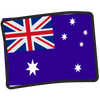
Whether a tea fanatic or not, you’ve more than likely heard of Earl Grey. It's one of the most iconic blends of black tea, available in various forms and always flavoured with bergamot oil, but what makes an Earl Grey an Earl Grey, what different types of Earl Grey tea are out there and why do we have two of them? In this article we’ll meet the Earls and get to the bottom of this, but first a quick history lesson (there’s defo a couple of pub quiz answers in here for you!)
A brief history
For those who aren't so up to snuff on their knowledge of British politics of the 1800s, you might not have heard of Earl Grey beyond the brew!
Earl Charles Grey was the British Prime Minister from 1830-1834. Despite his leadership delivering some pretty major changes like the abolition of slavery in 1833, poor old Charlie is best known for the brew he supposedly loved so well.
Now, the story of how he got so attached to this iconic cuppa is a little hazy. The most common version goes that a visit to China (either by the Earl himself or an envoy) included happening to save the life of a Mandarin noble's son - dramatic, right?!
The nobleman was so thankful that he sent the Prime Minister a special blend of tea, and the Earl was said to love it so much he had the blend replicated in the tea houses of London for him to enjoy.
While there's no actual evidence of this interaction taking place, it makes for a great story, doesn't it?
Now then, what makes an Earl Grey an Earl Grey?
The key ingredient that makes an Earl Grey an Earl Grey is the inclusion of a special citrus called bergamot - usually paired with a soft black tea, for instance Darjeeling in our Darjeeling Earl Grey. Bergamots are about the size of an orange but green like a lime, and unlike its citrusy cousins, you wouldn't want to take a bite of the fruit itself as it's more sour than a lemon and more bitter than a grapefruit. Err…. yum? When extracted however, the oils & peel are much softer & floral, making it great in everything from candles to a cuppa! No bergamot? Not Earl Grey.

What type of tea is Earl Grey?
Earl Grey tea always uses a black tea as a base, but different blenders take different approaches. For instance, we use Darjeeling in our Darjeeling Earl Grey and a blend of Assam, Rwandan, Ceylon and Darjeeling in our Earl Grey Strong. Typically lower priced Earl Grey’s use low quality black tea as a base and cover the bitterness with plenty of bergamot (sometimes unnatural) flavouring.
Different types of Earl Grey tea
While there are two basic ingredients as we’ve discovered above, there are several different types of Earl Grey tea. The most common are Classic Earl Grey, Cream Earl Grey and Lavender Earl Grey. Let’s delve into the difference between them.
Classic Earl Grey
The most common of all, made using black tea and bergamot. The black tea is often a blend from various regions around the world like our Earl Grey Strong, but can be from a single region too like our Darjeeling Earl Grey.
Cream Earl Grey
The usual black tea and bergamot, but with vanilla notes added to create a creamy texture. Different blenders take different approaches to create the vanilla flavour, but the most common is natural vanilla flavouring. Vanilla is quite a costly ingredient so you’ll often find cream Earl Grey prices a bit higher than classic!
Lavender Earl Grey
You’ll never guess… yep! This one includes lavender to create an even more floral flavour and aroma. Not as common as the first two, but a bit like David Cronenberg’s 1987 horror film ‘The Fly’ it’s a merge with a devout following.
What types do teapigs sell?
Great question! We have two Earl Grey’s in our range:
Darjeeling Earl Grey
First on the scene. This was one of our launch blends back in 2006 - SKU number ‘02’! A delicate blend of Darjeeling and Bergamot. Here’s what our tea taster says about it: “most Earl Grey’s use a poor quality base tea and load up on bergamot flavouring, which is like palming yourself off as landed gentry when all you own is a Barbour jacket. We use the finest Darjeeling from the foothills of the Himalayas and add the zesty, citrus bergamot and lime flavours of the Mediterranean to create something altogether more elegant. The blue cornflowers? Well, they just look pretty.”
Earl Grey Strong
This one came along a little later. The mission was simple, create an Earl Grey with a punch, for those who like their tea a little more… potent. Our tea taster says: “Do you like your Earl Grey to come with some real oomph and wallop? Well, this is the one for you. We’ve blended some powerful Assam and Rwandan teas with the more delicate Ceylon and Darjeeling to give the perfect strong tea base for the zesty, all-natural bergamot flavouring. Maybe more of a Duke than a lowly Earl?”
Earl Grey tea is one of the most iconic blends of black tea. The key ingredient that makes an Earl Grey an Earl Grey is the inclusion of a special citrus called bergamot. Earl Grey tea always uses a black tea as a base, but different blenders take different approaches, and typically lower priced Earl Grey's use low quality black tea as a base and cover the bitterness with plenty of bergamot (sometimes unnatural) flavouring.
There are two Earl Grey’s in our range of blends: Darjeeling Earl Grey and Earl Grey Strong. Darjeeling Earl Grey is a delicate blend of Darjeeling and bergamot, and Earl Grey Strong is an Earl Grey with a punch, blended with powerful Assam and Rwandan teas with the more delicate Ceylon and Darjeeling to give the perfect strong tea base for the zesty, all-natural bergamot flavouring.
Earl Grey tea is named after Earl Charles Grey, the British Prime Minister from 1830-1834. The story goes that a visit to China (either by the Earl himself or an envoy) included happening to save the life of a mandarin noble's son. The nobleman was so thankful that he sent the Prime Minister a special blend of tea, and the Earl was said to love it so much he had the blend replicated in the tea houses of London for him to enjoy.









